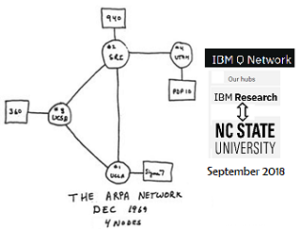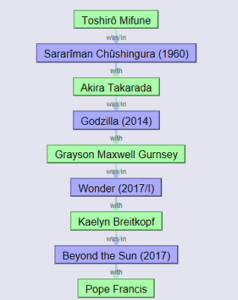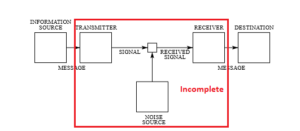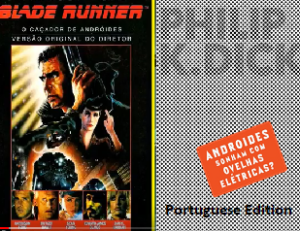
Arquivo para May, 2018
Law and networks
The proliferation of acts of intolerance, of provocations and various types of violence by the networks makes many people think that it would be better to prohibit all this and perhaps to close these sites of relationship.
by the networks makes many people think that it would be better to prohibit all this and perhaps to close these sites of relationship.
In Brazil in pre-election times, the climate promises to warm up, and the temptation to create laws and rules may seem tempting, but it hides authoritarianism and lack of freedom, but it is clear that slander, slander and slander are crimes, whether on facebook, on public roads or in the media that the owner of power maintains.
All this process in the networks is educational, however uncomfortable people will learn not to break relationships and create conflicts without any need, to strip themselves of prejudices and intolerances (there are differences between the two) and especially to go to acts of violence that are unacceptable crime, verbal violence as well.
The laws are there to be fulfilled, but also in this field a little tolerance helps to soften the climate, the excess of law makes us become pharisaic, say that steals more, this is worse than the other, I look for the good , and the honest, but without the rigor of the law. What the apostle Mark said in one of the words of Jesus (Mark 2: 25-26) “Jesus said to them,” Have you never read what David and his companions did when they were in need and hungry?
How did he enter the house of God, at the time that Abiathar was high priest, and ate the bread offered to God, and gave them also to his companions?
However, only priests are allowed to eat these loaves. ” It is necessary even tolerance with the intolerant, that is to say, many people are outraged at the most serious situation of the country, the politicians and the scandals that do not cease to be denounced, but it is necessary to return to the serenity and to discuss the “proposals and programs” .
May we find spaces of true dialogue where wisdom can sprout.
The first quantum computer hub
The North Carolina State Unit was chosen by IBM to have the first Quantum Computing Hub (Q Hub that became part of IBM’s Network Q), as well as the first networks linking some universities.
(Q Hub that became part of IBM’s Network Q), as well as the first networks linking some universities.
On December 5, 1969, ARPANET joined the Research Agency of the US Department of Defense, the University of California, Los Angeles (UCLA), the Stanford Research Institute (SRI) at Menlo Park, the University of California, Santa Barbara (UCSB) and the University of Utah (photo).
Students, faculty and researchers will be able to access IBM’s 20-bit supercomputer to solve classic computing problems that would take a long time to process, now they will be done in a few minutes depending on the problem.
Bob Sutor of IBM Research said “we can not create a computer with 10% of the Earth’s atoms, but even so, with the quantum computer we can represent exactly this information”, according to a post on Techinician Online.
IBM’s plan is more audacious, with Fortune 500 companies and universities working to solve larger problems more quickly through the Q Network, while NC State will be collaborating with local organizations to solve complex equations.
NC State faculty are developing both undergraduate and graduate courses to use quantum computing to build their knowledge in anticipation of the hub’s operational debut this fall (in September).
Birds live in nets
We have already posted on the blog a few years ago (in 2012) that the birds know the nets, in a work done by the University of Oxford, coordinator by the researcher Ioannis Psorakis.
the birds know the nets, in a work done by the University of Oxford, coordinator by the researcher Ioannis Psorakis.
This work stated that it was possible to automatically identify that the periods of intense social activity of the birds, they have “friends”, but also relate to passers-by, trying to identify who are members of the same group and which birds regularly go to others in “events,” informed the researcher Ioannis Psorakis, then did a Big Data analysis with a larger volume of data.
Now we want to relate this to another fact by noting that many bird species are disappearing in Europe, and I think this is not just about food and fruit, but pollen bees and especially herbicides.
Close to where I live I noticed that in the morning, after forming a cloud of pollens that causes irritation in many people, many birds came in the gravel “pecking” these “pollen”.
The Oxford team’s result indicated that birds did not randomly form flocks, but had a predilection for interacting with members of the population and also communicated feeding points, say a food court, and there they found their “life social “and thus perpetuated the species when mating.
I read in a report of 2015 that in the island of Galapagos was observed that the birds looked for to feed of pollen due to the shortage of insects, this was a scientific fact that was published in Nature Communications and made by researcher Anna Traveset, but all I found on the Web was that she is a researcher at the Higher Council for Scientific Research (CSIC) at the Mediterranean Institute for Advanced Studies.
I read on a Portuguese site that pollen levels were going to increase this May, and it was official because the alert was from the Portuguese Society of Allergology and Clinical Immunology (SPAIC).
I am putting together facts that are scientific facts alone, but the whole ecosystem gives an alert for a type of allergy that I see very common among the Portuguese. Maybe I need a more accurate research on the subject, but for me it’s the first time I see a chain process affecting man so bluntly, it’s great the number of people with these allergies is a big alert.
Cicadas, bees and nets
It was studying the cris-cris of the cicadas in flocks, which are synchronized that Duncan Watts decided to study nets and found the adviser Donald Strogatz and began to study nets, the phenomena of the small worlds and the six degrees of separation, Duncan’s doctoral thesis which later became an article was “The structure and dynamics of the small-world system” (1997).
to study nets and found the adviser Donald Strogatz and began to study nets, the phenomena of the small worlds and the six degrees of separation, Duncan’s doctoral thesis which later became an article was “The structure and dynamics of the small-world system” (1997).
The study was a success and to this day the article is one of the most read in studies of Social Networks.
But now we have a reverse case, the bees seem to gradually lose their strength and as polemizers of nature their threat of extinction begins to worry ecologists, researchers and now also researchers in Computing.
A study being developed by the University of Exeter in the UK seeks to create a “safe virtual space” for the threats faced by bees, creating a computational model of bee population dynamics in response to variables such as pesticides, parasites and loss of habitat.
The predictive tool called Bumble-BEEHAVE was developed by Grace Twiston-Davies to be a “free and easy to use system” that “takes into account the many complicated factors that interact to affect the drones.
The + result and a secure virtual space to test different management options, this model can test “six British bee species in an environment that has multiple sources of nectar and pollen.”
“Simulation allows researchers to understand the individual and interactive effects of multiple stressors that affect the survival of the bumblebee and feedback mechanisms that can protect a colony against environmental stress that can lead to collapse,” said Juliet Osborne of Exeter. the spiral colony. ”
Seeing in Portugal the amount of pollen in the air, which causes many respiratory diseases, I began to think about this serious problem that can affect the whole of nature.
Authority and co-immunity
The word “author” has the etymological root of Latin “auctor” which means “source”, “instigator” or “promoter”, suggests someone who should augere (increase, magnify or improve) and the suffix tor (an agent, who does the action, as in a doctor or a sculptor), so there is no direct relation to power or originality, he must “perfect” something that exists.
which means “source”, “instigator” or “promoter”, suggests someone who should augere (increase, magnify or improve) and the suffix tor (an agent, who does the action, as in a doctor or a sculptor), so there is no direct relation to power or originality, he must “perfect” something that exists.
The idea that authorship confers power or the creation of something original is as it comes from the word also something authoritarian, which can be interpreted as an exaggeration of authorship, an almost exclusivity or even an excess of power.
Networks are a contemporary way of establishing this authorship of improving what exists, in some ways even allowing “anonymous” people to participate in co-authorship, or in Sloterdijk’s account of co-immunity, and in this sense we can retrieve the word authority.
In the wisdom of oral culture, people who speak with authority are those who know the roots and traditions of a particular culture, are like living libraries that hold the cultural heritage of a nation, ethnicity, or people.
In the biblical saying that Jesus spoke with “authority”, besides being deeply connected to the Jewish culture from which the Christian originated, he also had an affective connection with his culture and his people, so besides knowing what he was talking about, he had empathy with the average person.
The idea of the modern state must change, it is unacceptable how politicians and managers of the Modern State behave, there is no trust of the population in them, levels of corruption are immoral, and it is necessary, above all, to look at the interests of the “public“.
But the networks demand changes in the individual posture as well, knowing how to listen, would like to culture what is different, respect values and traditions that are not like ours and not have cultural concepts as definitive truths, it is time for change and requires a change of mentality , networks can help.
We are so connected this way
The so-called “small world” phenomenon, worked on and addressed in Social Network Analysis (not to be confused with social media) is the idea that everyone can be connected through only six degrees of separation, and this has inspired not only scientists , but also artists, journalists, business people and the general public since the idea emerged in a 1990 John Guare play.
confused with social media) is the idea that everyone can be connected through only six degrees of separation, and this has inspired not only scientists , but also artists, journalists, business people and the general public since the idea emerged in a 1990 John Guare play.
Despite recent appearances of this concept in the media, illustrating the widespread belief in universal connectivity, there is also controversy over the same claim, and Barabási’s non-scale model is one of them, though his book Linked: the New Science of networks (2009) is the best reading of the topic.
Two examples cited are “Xing,” a network of potential subscribers referring to the idea of ”six degrees of separation,” and the attempt by the American television network ABC to conduct its own version of an experiment to test the same idea , through a “six degree” charity initiative using the concept on their website in an attempt to collect donations to a network of various charities.
Although Milgram’s experiment has already dealt with the subject, a manuscript by Pool and Kochen (Contacts and influence Social Networks, 1 (1978)) circulating around 1958 would have been the first version of the idea, but it was only published 20 years later, then not everyone gives credit.
The important thing about Pool and Kochen’s work is that they tried to give a mathematical structure to their “contact networks” following the path of other theorist as the mathematician. Rapoport (Spread of information through a population with socio-structural bias: I. Assumption of transitivity, 1953).
One prank to take this test is to use “Bancon’s Oracle” (by Kevin Bacon) on oracleofbacon.org and get the connection of Pope Francisco with Toshirô Mifune, for co-performances in films, the pope has already participated in two movies (see above)
Effect contested by Einstein is proven
The phantasmagoric effect at a distance, which is the fact that particles can relate  to distance and the effect of being “felt” by the other distance, is definitely proven in an experiment published by Nature on May 9.
to distance and the effect of being “felt” by the other distance, is definitely proven in an experiment published by Nature on May 9.
This test is called Bell, due to John S. Bell, was first shown by Alain Aspect who did an optical experiment in 1982, showing this action at a distance. Now the experiment was done recruiting 100,000 human participants to play an online video game that encourages the rapid entry of unpredictable selections and illustrates Bell’s test methodology, participants generated more than 97 million binary choices that were directed through a Web platform Scalable to 12 labs on five continents, where 13 experiments tested local realism using unique atomic photons, atomic clusters and superconducting devices (illustration).
For a period of 12 hours on November 30, 2016, participants around the world provided a sustained data stream of more than 1,000 bits per second for the experiments, using different human-generated data to choose each measurement configuration, correlations strongly contrast local realism and other positions in so-called bipartite and tripartite scenarios.
The results of the project included closing the “freedom of choice” gap (the possibility of scenario choices being influenced by hidden variables to correlate with particle properties), the use of video game methods for the rapid collection of generated randomness and the use of network techniques for global participation in experimental science.
Two data are fantastic from this experiment, proving the phantasmagoric distance action that Einstein contested in an article called EPR, the use of network methodologies in participation in global experimental science, and the use of the video games to simulate data.
Networks and global crises
Social networks are provoking an organic change in society as a whole, it is already more evident than it was ten years ago, but networking is still confused with decentralization and there are strong conservative forces calling for a new social “hierarchy”.
a whole, it is already more evident than it was ten years ago, but networking is still confused with decentralization and there are strong conservative forces calling for a new social “hierarchy”.
The perception that this or that country is a country in “crisis” more acute than others is valid, but the truth is that it is those who learn the most from the crisis that can get out of it faster, the first lesson is that there is a society more attentive, more diversified and less able to support centralized and authoritarian schemes, but why then this wave?
Precisely because the vast majority of the “silent” now reveal the true face, that of convenience and coexistence with values that were only “supported” by those who suffered some form of exclusion, and I do not speak only financially, even if it is serious.
Edgar Morin points out that now the public space “gathers society in its diversity. The right, the left, the crazy people, the dreamers, the realists, the activists, the piadistas, the rebels – everyone. Abnormal would be legions in order, organized by a single flag and led by party bureaucrats. It is creative chaos, not the pre-established order. ”
All this can go back in a civil war, I agree with Manuel Castells: “civil war and social movements are incompatible!”, But social movements are now not only the masses maneuvered by unions and parties, this is what the caudillos fear, there is much distrust and according to Castells “parties are universally despised by most people,” because we know that we pay his salary (high) and do not do what they should do.
But it is necessary to save social values so as not to fall into the temptation of violence and authoritarianism that is what the radicals and their masses want, Castells says “you need a lot more courage not to be violent. Being violent is easy. ”
I am in Portugal that experienced a deep crisis and still feel reflexes of it, but they learned to live together, to talk and to have a little more patience with serious social problems, but this weekend there was a mega manifestation of teachers who had salaries affected and retirement (reform here) delayed, some may be entitled only at 70´s years old.
Oral, written and electronic history of Shannon
There are good reasons for a certain lack of knowledge and criticism, often unfair, to Claude Shannon.
There is a rare interview in July 1982 by Robert Price, curiously called “Oral-History” in which he states:
“Well, back in ’42…computers were just emerging, so to speak. They had things like the ENIAC down at University of Pennsylvania…Now they were slow, they were very cumbersome and huge and all, there were computers that would fill a couple rooms this size and they would have about the ability of one of the little calculators that you can buy now for $10. But nevertheless we could see the potential of this, the thing that happened here if things ever got cheaper and we could ever make the up- time better, sort of keep the machines working for more than ten minutes, things like that. It was really very exciting.
We had dreams, Turing and I used to talk about the possibility of simulating entirely the human brain, could we really get a computer which would be the equivalent of the human brain or even a lot better? And it seemed easier then than it does now maybe. We both thought that this should be possible in not very long, in ten or 15 years. Such was not the case, it hasn’t been done in thirty years.”
The written work of Claude Shannon is well known, it is in his main work Mathematical Theory of Communication, which begins with an article with the same name published in the magazine of Bell Laboratories in 1948, and that has a revised version and corrected in the site of the Department of Mathematics, Harvard.
Finally, the great contribution of Shannon, besides that its presented diagram is always incomplete because they take from him the source of information and the destination of the information, and this makes the information “without signification” and without sense.
But his great contribution is in fact the information in the artifact, what are the limits of “noise” (not only this) but he himself states in his work that he will deal with information in a strict sense, that is, in the artifact
Androids has dreams?
The two films of Blade Runner were inspired by the book Androids dream of electric sheep ? by Philip K Dick is reissued in 50-year commemorative edition (1968-2018) with unpublished writings: a letter from the author to the producers of Blade Runner in which prophesies the success of the production and the last interview granted by Dick, published in 1982 in the journal The Twilight Zone Magazine at the time of the launching of the film.
by Philip K Dick is reissued in 50-year commemorative edition (1968-2018) with unpublished writings: a letter from the author to the producers of Blade Runner in which prophesies the success of the production and the last interview granted by Dick, published in 1982 in the journal The Twilight Zone Magazine at the time of the launching of the film.
The exclusive preface signed by Argentine writer and journalist Rodrigo Frésan, a lover of science fiction and Dick’s work chronicling the troubled and impressive life of the author, and a brilliant scenarios they call “post-apocalyptic” by Douglas Kellner and Steven Best, professors respectively from the University of California and the University of Texas.
Add to this a postface written by the translator of the book, Ronaldo Bressane, who compares Androides with Blade Runner and comments on aspects of the work not explored in the cinema, such as environmental concern, besides the religious and metaphysical questions present in the text.
Religious and metaphysical issues are so current that they deserve an up-to-date view of what we think is our inner universe, our values and our relationship to the natural and yet transcendental world, in the non-immediate sense.
What is nature beyond nature and what is man beyond human is neither trans-nature nor trans-human only, but to look at it properly it will be necessary to have a transdisciplinary look, not to see from the side apocalyptic and pessimistic only.
Artificial Intelligence is undoubtedly an inspiration for the next few years, thinking of it is not thinking outside the spirit and human interiority, but it’s just questioning what it is, Blade Runner 2049 did this, but success was small, we preferred Robocop.
If inner life was reduced in modernity it is not due to current and upcoming advances, but due to the fact that sometimes we attribute to humans robots attitudes and not the opposite, because the current robots still have mechanical reasoning and a limited logic.

